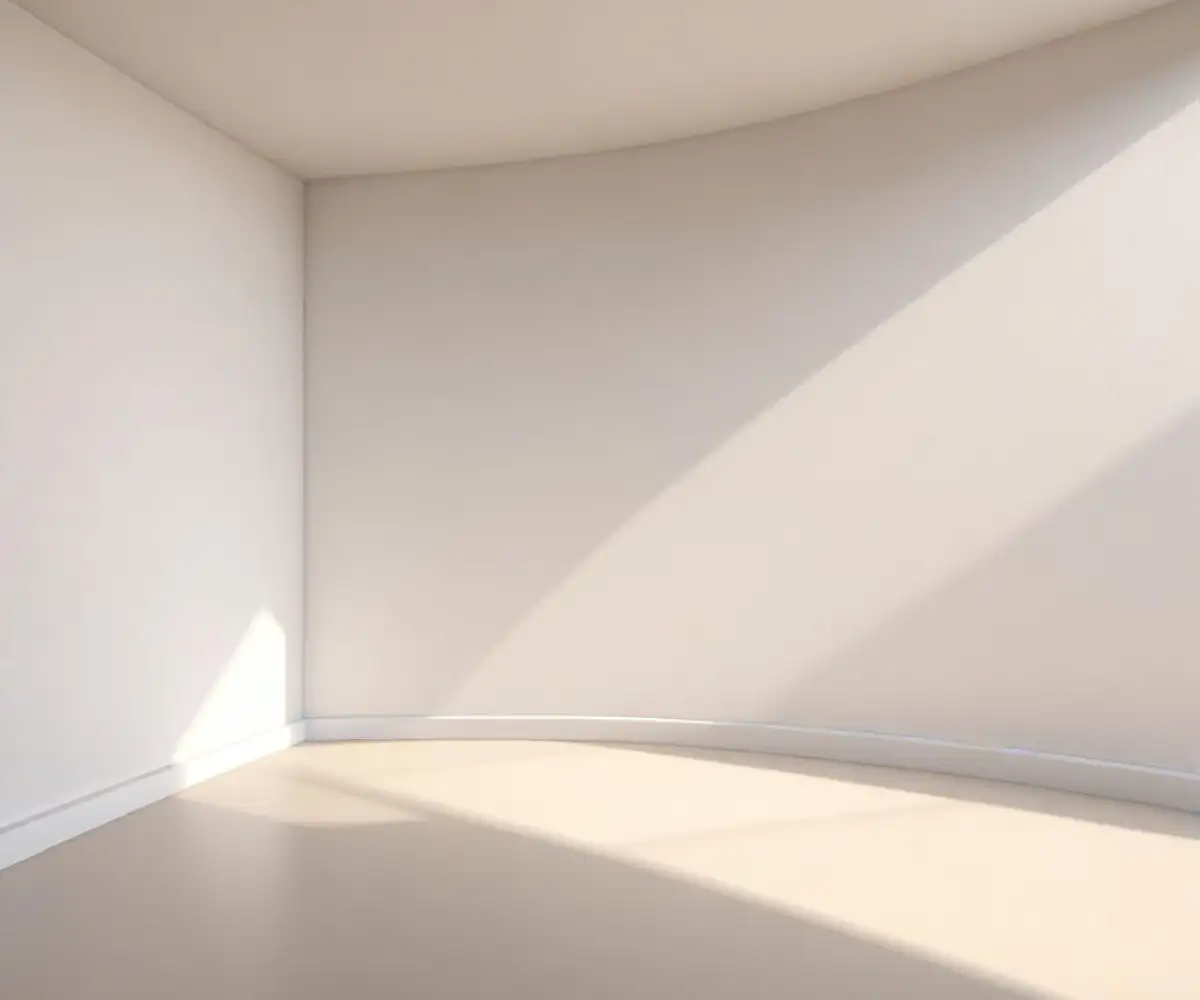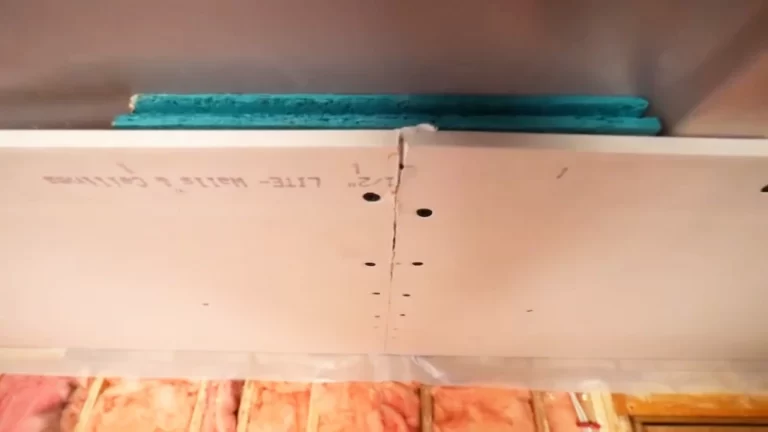Bowed Drywall? Don’t Let It Ruin Your Walls or Your Peace of Mind
There are few home repair issues as unsettling as looking down a wall and seeing a distinct curve or bulge. This phenomenon, known as bowed drywall, is more than just a cosmetic flaw. It’s often a distress signal from your home, indicating an underlying problem that needs immediate attention.
Ignoring a bowed wall can lead to more significant structural issues, costly repairs, and potential safety hazards. Understanding the root cause is the critical first step to implementing a lasting solution and restoring the flat, seamless look of your interior walls.
You'll Learn About
What Is Bowed Drywall and Why Is It a Serious Issue?
Bowed drywall occurs when a sheet of gypsum board, commonly known as drywall or Sheetrock, bends or curves either outward or inward. This deformation disrupts the flat plane of the wall or ceiling, creating noticeable waves, bulges, or depressions. While a minor imperfection might be easy to overlook, a significant bow is a clear sign that something is wrong behind the surface.
The drywall itself is merely the symptom; the real problem lies with moisture, the framing behind the wall, or even the home’s foundation. Addressing only the drywall without fixing the source is like taking a cough drop for pneumonia—it provides temporary relief but doesn’t cure the underlying disease. Ultimately, the only effective way to fix damaged drywall is to replace it, but not before you’ve completely solved the root problem.
The Subtle and Not-So-Subtle Signs of a Bowing Wall
Identifying bowed drywall often starts with a visual inspection. Look for shadows or light that catches uneven surfaces, especially along long walls or ceilings. You might also notice that baseboards or crown molding no longer sit flush against the wall, creating visible gaps.
In some cases, the pressure from a bowing wall can cause secondary issues. For instance, you might find that your outlet covers are bending or cracking, a subtle clue that the wall behind them is no longer flat. Horizontal or stair-step cracks appearing alongside the bow are red flags for more severe structural stress.
Uncovering the Culprits: Top Reasons Your Drywall Is Bowing
To effectively fix a bowed wall, you must first play detective and pinpoint the cause. Several factors, ranging from environmental conditions to installation errors, can be responsible. Each cause requires a different approach to ensure the problem doesn’t return.
1. The Number One Enemy: Moisture and Water Damage
By far, the most common cause of bowed drywall is exposure to moisture. Drywall is made of a gypsum core pressed between two thick sheets of paper. When this material gets wet, the gypsum softens and loses its structural integrity, causing it to sag, swell, and bow under its own weight.
Water damage can come from numerous sources, including a leaky roof, a burst pipe, plumbing leaks behind the wall, or even poor ventilation in high-humidity areas like bathrooms and basements. If you notice discoloration, stains, or a musty smell accompanying the bow, water is almost certainly the culprit.
2. Foundation Settlement and Structural Shifts
Your home’s foundation is its bedrock. If the foundation shifts or settles unevenly, it puts immense stress on the entire wooden frame of the house. This movement can cause the wall studs, which the drywall is attached to, to twist or move, forcing the drywall to bow.
This is one of the most serious causes, as it points to a problem with the entire structure of your home. Bowing walls, especially in the basement, combined with other signs like stair-step cracks in brickwork or doors and windows that stick, demand an immediate professional inspection.
3. Poor Installation and Inadequate Fastening
Sometimes, the problem dates back to the day the drywall was installed. If the installers used the wrong type or number of screws or nails, the drywall sheets might not be adequately secured to the wall studs. Over time, gravity and minor shifts in the home can cause the drywall to pull away from the studs and bow.
Similarly, if fasteners are overdriven—meaning they break the paper face of the drywall—they lose their holding power. This can create unstable sections that are prone to bulging or bowing. Proper installation is critical for a long-lasting, flat finish.
4. Humidity Havoc: The Attic and Basement Connection
High humidity, especially in poorly ventilated attics and basements, can lead to chronic moisture absorption by the drywall. In an attic, hot, moist air can cause the ceiling drywall below to sag and bow. In a basement, hydrostatic pressure from water in the soil can push against the foundation walls, causing them to bow inward and, in turn, affecting the interior drywall.
Properly ventilating these spaces and managing groundwater with systems like sump pumps and French drains is essential to prevent this type of damage. Dehumidifiers can also play a key role in maintaining a stable environment.
5. The Overlooked Factor: Truss Uplift
A fascinating but often misunderstood cause of ceiling cracks and bowing near interior walls is “truss uplift.” This occurs when the bottom chords of the roof trusses are exposed to different temperature and moisture conditions than the rest of the truss system, typically due to insulation in the attic.
In winter, the bottom chord stays warmer and drier than the top chords, causing it to arch upward slightly, lifting the ceiling with it. This can create a bow or a crack between the ceiling and the interior walls, which then settles back down in the summer. While not always a structural emergency, it’s a specific issue that requires a unique solution.
6. Heavy Loads and Stresses
Walls are not designed to bear unlimited weight. Improperly secured heavy objects can exert significant pressure on drywall. For example, if you’re wondering what to do when a cabinet is falling off the wall, the stress it creates can lead to bowing or even a complete failure of the drywall section. Always ensure heavy items are anchored directly to wall studs.

Your Action Plan: How to Fix Bowed Drywall Like a Pro
Once you’ve identified the cause, you can move on to the repair. The method you choose will depend on the severity of the bow and the underlying issue. Remember to always address the root cause first; otherwise, your repair will be temporary.
Step 1: Assess the Severity and Isolate the Source
First, determine how significant the bow is. Use a long straightedge or a 4-foot level to gauge the depth of the curve. A minor bow of less than half an inch might be fixable without replacing the whole sheet, while a larger bow almost always requires removal of the damaged section.
If moisture was the cause, you must find and stop the leak and allow the entire area to dry out completely. This may involve opening up the wall to inspect for mold, which should be professionally remediated if found.
Step 2: Gather Your Tools and Materials
Having the right tools on hand makes the job much smoother. Depending on the repair method, you will need a combination of the items listed in the table below. Proper preparation is half the battle won.
| Category | Item | Purpose |
|---|---|---|
| Cutting & Removal | Utility Knife | Scoring and cutting drywall. |
| Cutting & Removal | Drywall Saw | Cutting out damaged sections. |
| Cutting & Removal | Pry Bar | Removing old drywall panels. |
| Fastening | Drill/Driver | Driving drywall screws. |
| Fastening | 1 1/4″ Drywall Screws | Securing new drywall to studs. |
| Finishing | Drywall Taping Knives (6″ & 12″) | Applying and smoothing joint compound. |
| Finishing | Joint Compound (Mud) | Covering seams and screw heads. |
| Finishing | Drywall Tape (Paper or Mesh) | Reinforcing joints between panels. |
| Finishing | Sanding Sponge/Block | Smoothing the dried compound. |
| Safety | Safety Glasses & Dust Mask | Protecting eyes and lungs. |
Step 3: Addressing Minor Bowing (Re-securing the Panel)
For slight bowing caused by fastener failure or minor moisture damage that has since dried, you may be able to pull the drywall back into place. Locate the studs using a stud finder. Start from a flat area and drive new drywall screws every 8-12 inches into the studs, working your way towards the center of the bow.
Apply gentle, steady pressure to the drywall as you drive the screws. The goal is to slowly pull the panel back to the stud without cracking it. Once secure, you’ll need to apply joint compound to the new screw dimples, sand, and repaint.
Step 4: Tackling Major Bowing (The Cut-and-Replace Strategy)
For significant bowing, the only reliable solution is to remove the damaged section. Use a utility knife and a straightedge to score a rectangle around the entire bowed area, making sure your cuts land in the center of the wall studs on the vertical sides.
Cut out and remove the damaged piece. Inspect the wall cavity for any issues, such as moisture, mold, or bowed studs, and address them. Then, cut a new piece of drywall to fit the opening and screw it into place, ensuring the screw heads create a slight dimple without breaking the paper. Tape the seams, apply several thin coats of joint compound, sanding between each coat, and then prime and paint.
Prevention Is Key: How to Stop Drywall From Bowing Again
Fixing the problem is good, but preventing it from happening again is better. A few proactive measures can save you from future headaches and expenses. It’s about creating an environment where drywall can thrive.
Mastering Moisture Control
Regularly inspect your home for leaks in the roof, plumbing, and around windows. Ensure bathrooms and kitchens are well-ventilated to exhaust humid air. In basements and crawl spaces, consider waterproofing measures and running a dehumidifier to maintain stable humidity levels.
The Importance of Proper Installation
Whether you’re doing it yourself or hiring a pro, insist on correct installation techniques. This includes using the right length and type of fasteners, spacing them correctly, and avoiding overdriving them. Proper installation is critical in complex situations, such as when you need to navigate drywall over a protruding pipe, to ensure a secure and lasting finish.
When to Call in the Professionals
While many minor drywall repairs are within the grasp of a determined DIYer, some situations absolutely require professional intervention. Knowing your limits is crucial to avoid turning a manageable problem into a disaster.
If you suspect the bowed drywall is caused by foundation issues, structural movement, or a serious water intrusion event, do not hesitate to call a structural engineer or a foundation repair specialist. These are not DIY problems. Additionally, if you discover extensive mold, it’s best to hire a professional mold remediation company to ensure it’s removed safely and completely.

